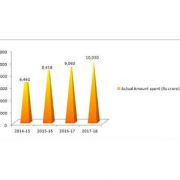A large number of clients of Indian IT firms are expecting services contract where a vendor is responsible for delivering a solution at a set price and within a set time frame, discussed mutually.
The arrangement avails the vendor with the flexibility in the execution and staffing of the project. Prior to Fixed Price contracts, any standard contract popularly known as time and materials contract involved customers paying for the time spent by the employee’s of an IT vendor as well as for the materials used by the vendor. Customers had control over the employes which they received in that form of contract.
“There is a lot of different models that exist across the organisation, spanning industries and from one market to another. In America it is probably a little more towards time and material. In Europe probably towards more fixed price. Sometimes the client likes to control things. Sometimes he likes to limit his risk or push his risk to someone else. You cannot have both. You cannot have at the same time full control on everything and push responsibility to someone else,’’ said Thierry Delaporte, COO, Capgemini.
In the quarter ended December 2018 fixed price contracts included 53 percent of revenue for Infosys, 60 percent for Wipro and 63 percent for HCL.
“A lot of contracts are outcome based and many clients expect a high degree of visibility into their delivery structure, skills and scale of people. It creates a risk management lever too,” says Akhilesh Tuteja, global cyber security practice co-leader and heads of the IT advisory practice for KPMG, India.
Detailing more on the existing scenario, Hansa Iyengar, analyst in London headquartered Ovum Research, said: “Customers do have a say in who the vendor hires and this is specifically prominent in roles such as architects, team leads, project managers, agile coaches, etc, as these roles have a direct impact on the delivery quality.”
“It cannot be clearly established that customer’s involvement in recruitment has a negative impact on the vendor’s revenues, though it is true that better quality resources cost more,” added Iyengar.






